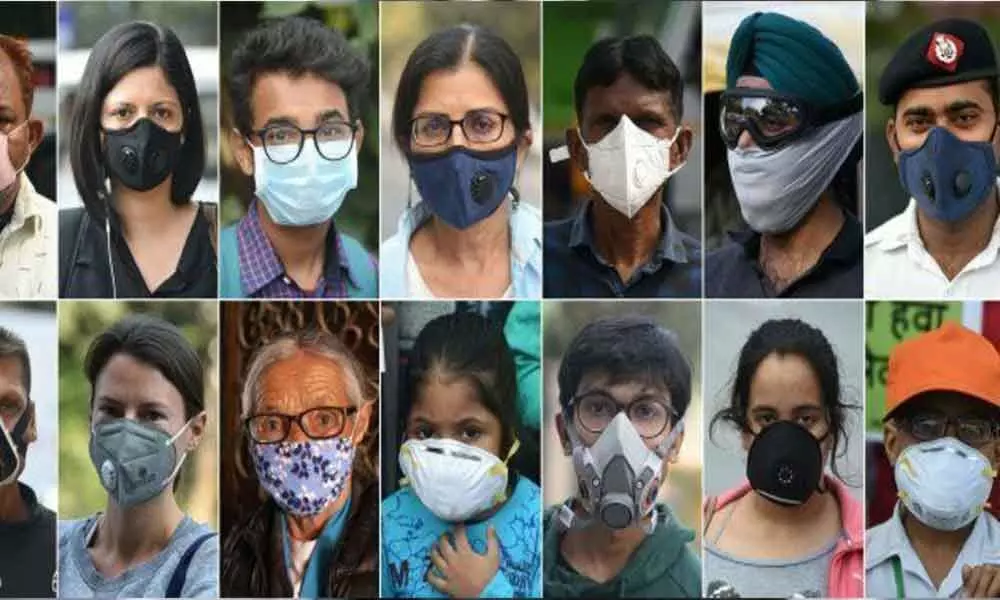Children in Delhi are forced to breathe polluted air

New Delhi: At times when schools in Delhi NCR are shut for two days due to the air pollution, some poor children on the streets are forced to breathe the toxic air as they struggle hard to sell their goods at the traffic signals to sustain their daily bread.
ANI reached few such children on traffic signals who told that "irritation and burning sensation in eyes" and "difficulty in breathing" are the common problems they are encountering.
"Our eyes burn and we experience difficulty in breathing, we don't have masks," said a child.
"Its pollution everywhere, government has not provided us masks," said another child.
On Thursday, the Air Quality Index (AQI) docked at 472 with particulate matter (PM) 2.5 levels at 322 and PM 10 levels at 487 at 8:30 in the morning, said System of Air Quality and Weather Forecasting And Research (SAFAR).
An AQI between 201 and 300 is considered 'poor', 301-400 'very poor' and 401-500 'severe'. An AQI above 500 falls in the 'severe plus' category.
As air pollution levels are nearing 'severe plus category', schools in Noida, Ghaziabad and Delhi have been shut for two days, hours after the apex court-mandated anti-pollution authority EPCA that they should be closed as pollution in the region hovered close to 'emergency' levels.
Children and infants are more susceptible than adults to air pollution as they still developing and their respiratory tracks are more permeable.According to the UNICEF study, 2016, 'Clean the air for children', around 300 million children around the world currently live in areas where the air is toxic - exceeding international limits by at least six times.
Using satellite imagery of outdoor air pollution, this study found that around 300 million children currently live in areas where outdoor air pollution exceeds international guidelines by at least six times.
The study said in total, around 2 billion children live in areas that exceed the World Health Organisation annual limit of 10 mg/m3 (the amount of micrograms of ultra-fine particulate matter per cubic metre of air that constitutes a long term hazard). (ANI)


